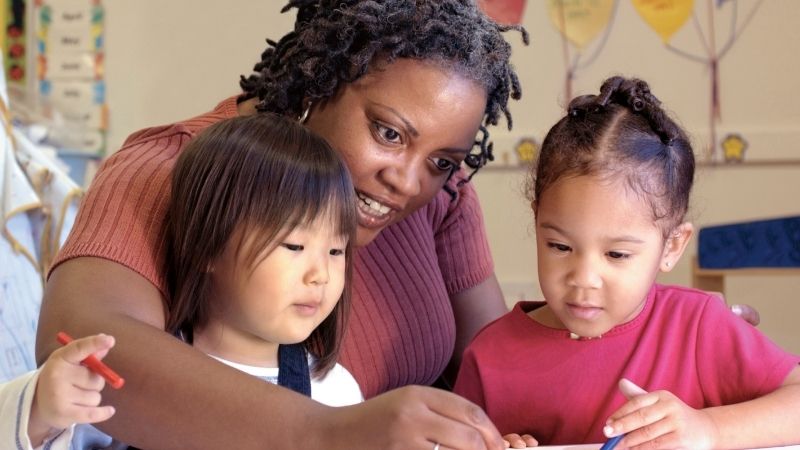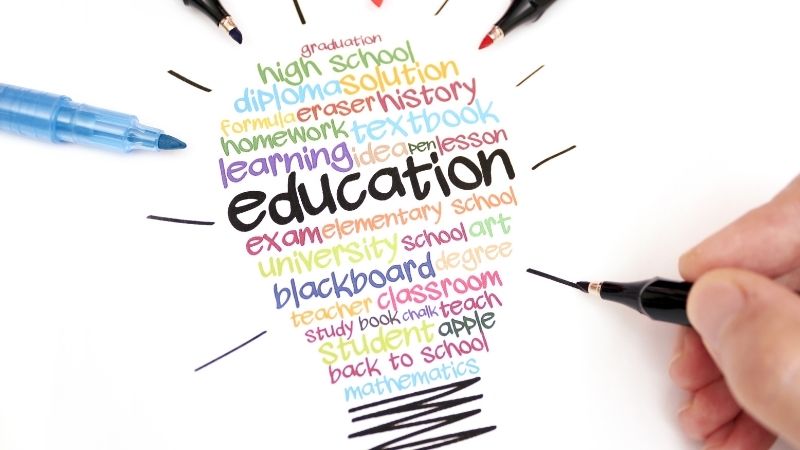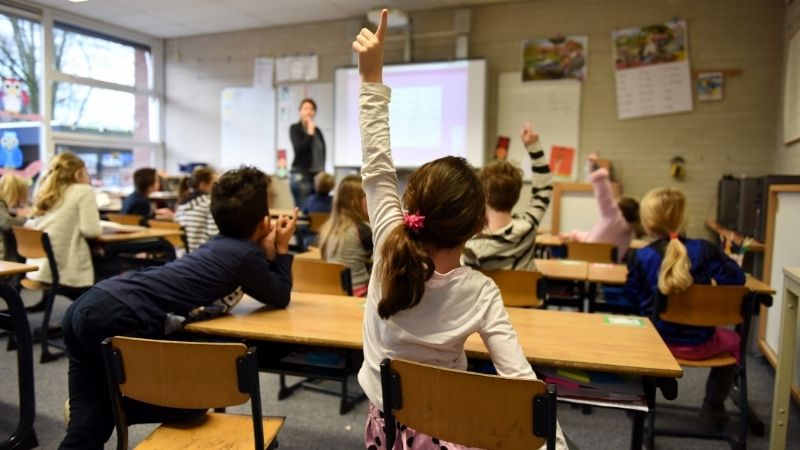
In today's globalized world, the ability to communicate effectively in multiple languages is increasingly valued. Bilingual education has emerged as a promising approach to bridge language barriers and promote cultural understanding.
This article explores the benefits of language immersion and dual language programs, examines the use of ESL resources for effective language learning, highlights the importance of reinforcing cultural appreciation in bilingual education, and discusses how multilingual teaching strategies can enhance the learning experience for diverse student bodies.
Through this analysis, we aim to shed light on the significance of embracing bilingual education as a means to overcome linguistic obstacles and foster inclusive educational environments.
Key Takeaways
- Bilingual education and language immersion programs offer numerous benefits, including developing proficiency in multiple languages, fostering cognitive abilities, promoting cultural understanding, and enhancing language acquisition and literacy skills.
- These programs also improve critical thinking and problem-solving capabilities, achieve higher levels of proficiency in the target language, improve cognitive skills, and increase cultural awareness and communication abilities.
- Students who participate in bilingual education and language immersion programs gain a deeper understanding and appreciation of different cultures, enhance problem-solving skills and critical thinking abilities, and develop higher levels of metalinguistic awareness and cultural competence.
- These programs also foster empathy and open-mindedness, prepare students for future global citizenship, promote cultural exchange with native speakers, and enhance language integration and understanding of language nuances.
The Importance of Bilingual Education
Bilingual education is crucial in providing students with the opportunity to develop proficiency in multiple languages, fostering cognitive abilities, and promoting cultural understanding.
Research has consistently shown that bilingualism offers numerous advantages for individuals throughout their lives. One of the main benefits of bilingual education is enhanced language acquisition. When students are exposed to and engage with multiple languages on a regular basis, they develop stronger language skills compared to monolingual peers. This increased proficiency extends beyond just the languages being learned; it also positively impacts overall literacy skills, critical thinking abilities, and problem-solving capabilities.
Additionally, bilingual education promotes cultural understanding by exposing students to different cultures and perspectives. This exposure enhances empathy and fosters an appreciation for diversity among students, preparing them to be active participants in today's global society.
Exploring Language Immersion Programs
Language immersion programs have become increasingly popular in educational settings due to their effectiveness in promoting language acquisition. Research has shown that students who participate in these programs often achieve higher levels of proficiency in the target language compared to traditional language instruction methods.

Additionally, language immersion programs offer numerous benefits for students, such as improved cognitive skills, increased cultural awareness, and enhanced communication abilities.
Furthermore, these programs provide valuable opportunities for cultural integration by immersing students in the customs and traditions of the target language's community.
Effective Language Immersion
Effective language immersion programs provide students with a comprehensive and immersive learning environment that fosters linguistic fluency and cultural understanding. These programs have been shown to be highly effective in promoting language acquisition by providing students with opportunities for authentic language use and exposure.
Immersive language instruction allows students to engage in meaningful interactions with native speakers, allowing them to develop their listening, speaking, reading, and writing skills in a natural and communicative way. Research has consistently demonstrated the benefits of immersive language instruction in terms of improved language proficiency, increased confidence in using the target language, and enhanced cross-cultural awareness.
Benefits for Students
One advantage of immersive language instruction is that it promotes a deeper understanding and appreciation of different cultures. Language proficiency significantly contributes to cognitive development, as it enhances problem-solving skills, critical thinking abilities, and overall academic performance.
Research has shown that students who participate in language immersion programs demonstrate higher levels of metalinguistic awareness and cultural competence compared to their monolingual peers. Immersive language instruction provides students with the opportunity to engage in authentic interactions with native speakers, which leads to more effective language acquisition and mastery.
By immersing themselves in another culture's language, students gain insight into its customs, traditions, values, and perspectives. This exposure fosters empathy and open-mindedness towards diverse communities, preparing students for future global citizenship.

In light of these benefits for students' linguistic proficiency and cognitive development, it is crucial to explore the cultural integration opportunities that arise from bilingual education programs.
Cultural Integration Opportunities
Cultural integration opportunities in immersive language instruction allow for a deeper understanding and appreciation of different cultures. This integration occurs through various means, including:
Cultural Exchange: Immersive language programs provide students with the opportunity to interact with native speakers and engage in authentic cultural experiences. Through these exchanges, students can gain firsthand knowledge of customs, traditions, and values of different cultures.
Language Integration: By immersing themselves in a new language environment, students develop a better understanding of the language's nuances and intricacies. This not only enhances their linguistic abilities but also helps them understand how language is deeply connected to culture.
Increased Cultural Appreciation: Through exposure to diverse cultures, students develop empathy and respect for different ways of life. They learn to appreciate the richness and diversity that exists within our global community.
By embracing cultural integration opportunities in immersive language instruction, educators can foster an environment where students become global citizens who value diversity and possess intercultural competence skills necessary for effective communication across cultural boundaries.
Moving forward into the subsequent section on utilizing ESL resources for effective language learning...

Utilizing ESL Resources for Effective Language Learning
Utilizing appropriate ESL resources can significantly enhance language learning and proficiency acquisition. Interactive language learning techniques, such as incorporating multimedia materials, online platforms, and language learning software, provide learners with opportunities for engagement and practice in a dynamic and immersive environment.
These resources not only offer a wide range of authentic materials but also facilitate interactive activities that promote active participation, collaboration, and critical thinking skills. Research has shown that these interactive approaches are particularly effective in developing learners' communicative competence and linguistic accuracy.
By engaging in meaningful interactions with the target language through diverse resources, students are able to consolidate their knowledge, expand their vocabulary, improve their pronunciation skills, and develop fluency in a more efficient manner.
Transitioning into the subsequent section on fostering cultural appreciation in bilingual education...
Fostering Cultural Appreciation in Bilingual Education
Promoting cultural understanding and embracing diversity through language is a crucial aspect of fostering cultural appreciation in bilingual education.
By incorporating diverse languages into the curriculum, educators can expose students to different cultures and foster an environment of inclusion.
This not only helps students develop a deeper understanding and respect for other cultures, but also enhances their ability to communicate effectively in a multicultural society.

The fostering of cross-cultural understanding can be achieved by incorporating diverse perspectives and experiences into the educational environment. This is particularly important in bilingual education, where students have the opportunity to engage in cultural exchange and develop intercultural communication skills.
To promote cultural understanding, educators can:
Encourage cultural exchange: By creating opportunities for students from different backgrounds to interact and share their cultures, schools can foster a sense of appreciation and respect for diversity.
Incorporate intercultural activities: Including activities that expose students to different cultures, such as celebrating holidays from various countries or organizing multicultural events, allows them to learn about other cultures firsthand.
Teach intercultural communication skills: Providing explicit instruction on effective communication across cultures helps students develop the necessary skills to navigate diverse environments and build meaningful relationships with individuals from different backgrounds.
Embracing Diversity Through Language
Emphasizing the importance of linguistic diversity in educational settings allows students to develop a deeper understanding and appreciation for different languages and cultures. A celebration of diversity through language inclusivity enables students to engage with various linguistic traditions, fostering cultural exchange and mutual respect.
Research has shown that exposure to multiple languages enhances cognitive abilities, such as problem-solving skills and creativity, while also promoting intercultural communication. Additionally, embracing linguistic diversity can improve academic performance among students from diverse backgrounds by providing them with access to education in their native language or through bilingual instruction.

Furthermore, implementing multilingual teaching strategies not only benefits linguistically diverse students but also enriches the learning experience for all students, creating an inclusive environment that values and celebrates the unique contributions of each individual.
Enhancing the Learning Experience Through Multilingual Teaching Strategies
Implementing multilingual teaching strategies contributes to an enriched learning experience for diverse student populations. By incorporating multilingual communication and inclusive teaching methods, educators can create an environment that fosters cultural appreciation and supports the academic success of all students.
Promoting Language Development: Multilingual teaching strategies allow students to develop proficiency in multiple languages, enhancing their cognitive abilities and expanding their opportunities for future success.
Fostering Inclusivity: By embracing diverse languages and cultures within the classroom, students feel valued, respected, and included, promoting a sense of belonging and creating a positive learning environment.
Improving Academic Achievement: Research has shown that multilingual education positively impacts academic achievement by improving critical thinking skills, problem-solving abilities, and overall cognitive development.
Benefits of Dual Language Programs for Diverse Student Bodies
Promoting bilingualism through dual language programs offers numerous advantages for students from diverse backgrounds. These programs not only facilitate cultural integration but also provide language learning benefits.
Research has shown that dual language programs promote cognitive flexibility and improve academic achievement in both languages. Students who participate in these programs develop higher levels of proficiency in their second language and are able to communicate effectively with people from different linguistic backgrounds.

Additionally, dual language programs foster cultural appreciation by exposing students to different cultures, traditions, and perspectives. This exposure helps students develop a deeper understanding and respect for other cultures, leading to a more inclusive and harmonious community.
Overall, the implementation of dual language programs in schools can contribute significantly to the educational experience of diverse student bodies by enhancing their language skills and promoting cultural integration.
Frequently Asked Questions
How Can Bilingual Education Benefit Students From Diverse Backgrounds?
Bilingual education benefits students from diverse backgrounds by facilitating language acquisition and promoting academic success. Research shows that language immersion and dual language programs, along with the use of ESL resources, cultural appreciation, and multilingual teaching strategies enhance students' learning experience.
What Are Some Effective Strategies for Teaching Language Immersion Programs?
Effective strategies for teaching language immersion programs include incorporating authentic materials and activities that provide opportunities for students to use the target language in meaningful contexts, implementing a variety of interactive and communicative classroom tasks, and scaffolding instruction to support language development.
Where Can Educators Find Reliable ESL Resources to Support Language Learning?
Reliable ESL resources for language learning can be found on online platforms and in language institutes. These resources provide educators with access to various materials, activities, and lesson plans to support the development of language skills in diverse student populations.
How Can Bilingual Education Foster Cultural Appreciation Among Students?
Bilingual education fosters cultural appreciation among students through cultural exchange and language fluency. By immersing students in different languages, they are exposed to diverse cultures, fostering a deeper understanding and respect for other ways of life.
What Are Some Practical Ways to Apply Multilingual Teaching Strategies in the Classroom?
Promoting language fluency and enhancing communication skills can be achieved through practical application of multilingual teaching strategies in the classroom. These strategies involve incorporating diverse languages, using authentic resources, encouraging active participation, and fostering a supportive learning environment.

 Careers in EducationElementary EducationHigh School EducationEducational TechnologyTeaching StrategiesSpecial EducationPrivacy PolicyTerms And Conditions
Careers in EducationElementary EducationHigh School EducationEducational TechnologyTeaching StrategiesSpecial EducationPrivacy PolicyTerms And Conditions
